Just as there are different types of camping so too are there different ways to plan and pack your meals. It can be as easy as packing a cooler with hot dogs, drinks and marshmallows to as complex as fitting 4 days worth of food in a container the size of a milk carton. In any sense, the goal is to plan accordingly for the type of trip you’re embarking on to ensure adequate nutrition and plenty of energy.
Our trip this weekend was laid back. Purely park and camp, each group brought their own cooler and agreed beforehand on the types of food they were bringing. As we had electrical hookups and access to services, our food was easy to keep cold with coolers of ice. We had lovely breakfasts of bacon, eggs, bagels, and fruit and dinners of hot dogs, grilled cheese, trail mix and fruit. We also had plenty of energizing granola bars and yummy s’mores to munch on in between. It was a complete smorgasbord, with tons of food leftover.
But what if you aren’t camping with a group? How can you plan a reasonably concise menu if you don’t want to subside on the limited offerings of expensive packaged dehydrated meals or count ounces like a coke dealer? Luckily, there are now countless easy and user-friendly equipment options and resources available; whether you simply want to take less on the trip or are trying to maximize nutrition and lessen pack weight on a multi-day hike.
Equipment: We’ve invested in quite a few space-saving cooking tools over the past year in order to take and carry less on our trips. The biggest change has been the way we cook. Above you see my father-in-law cooking on a good ol’ Coleman Classic. Unfortunately, for all it’s awesomeness in making cooking portable and quick it weighs nearly 12 pounds. Two Christmas’s ago, Neil and I (on accident) bought each other matching Jetboil Gourmet’s. Although there are for sure other options that beat its size (26.3 ounces), you can’t beat the ease-of-use and utility. Another way we’ve saved money is not lugging tons of water with us, instead opting for a water filtration system and camelbaks built into our packs. Katadyn makes a great water filter that is easy to assemble, clean and use on the fly, weighing only 11 ounces and fitting in a super-small stuff sack. Compare that with the roughly 8 pounds a gallon of water weighs!
Ingredients: There’s a dated preconception that camp food is all hot dogs and GORP. While I enjoy both, the sky is really the limit when it comes to camp food. Everything from wraps to pasta to even dessert is possible!
Tips to Get You Started:
Try to keep your food items non-perishable. Although this isn’t a must, it’s best to consume any perishables you do bring within the first day or so.
Think compact. Try to use items that pack well and don’t take a lot of room.
Opt for items that aren’t easily damaged or repack them into containers that prevent damage. (Ex: eggs or soft, easily-bruised fruits.)
Keep it light. Although you may not be a stickler for weight, you don’t want to carry more weight than you absolutely have to.
Think about your trash. How much waste will your ingredients produce. Paper-based packaging is a lot easier to carry than empty cans and bottles.
With those things in mind, you can now let your imagination go wild. Where to begin? Well here are a few of Neil and my tried-and-true ingredient staples:
- Powdered milk: Not all that impressive by itself, and its usually in the forgotten corner of the grocery store, but it’s great to make camp dishes a little creamier.
- Oatmeal: Energizing and beyond simple in the Jetboil. Add a little dried fruit and you’ll forget you are roughing it.
- Instant Rice: Light to carry, fast to make, and a guaranteed “fill me up,” rice can make just about any meal feel a bit more gourmet.
- Dry Soup Mix: Erase images of powdered french onion soup from your mind. Now there are tons of dehydrated hearty soups on the market, full of flavor and not at all runny.
- Homemade or store-bought pancake and biscuit mixes: Just add water!
I could go on for hours, the options really are that limitless. The best thing you can do is experiment beforehand. Plan out each meal and the ingredients it uses and above all make sure you are getting the right nutrition. There are many great resources out there for ideas: Here are a few of our favorites:
Books:
- Basic Illustrated Cooking in the Outdoors (Basic Essentials Series) – by Cliff Jacobson (by my awesome former 8th grade science teacher. Covers cooking outdoors in a variety of environments)
- Trail Food: Drying and Cooking Food for Backpacking and Paddling – by Alan Kesselheim (a good primer if you’re new to dehydrating)
- SAS Survival Handbook: How to Survive in the Wild, in Any Climate, on Land or at Sea – by John “Lofty” Wiseman (not exclusively on cooking, but a handy little guide with a nice food section we keep with us on every trip)
Web:
- Wild Backpacker: Great food, tips and equipment recommendations.
- Backpacking Recipes: One of the few really great backpacking meal blogs we’ve found to date.
- Backpacking Light: Great backpacking community and place for info-share, especially when it comes to equipment and food!
We hope these tips at the very least give you some ideas on ways you can pack lighter and better meals that make any camping trip more fun and memorable. If you have questions, feel free to e-mail us, we’d be happy to help. Happy Trails!
You may also like

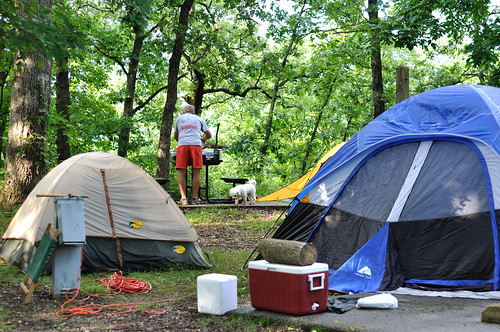
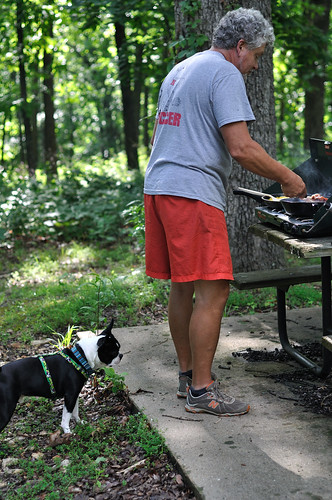
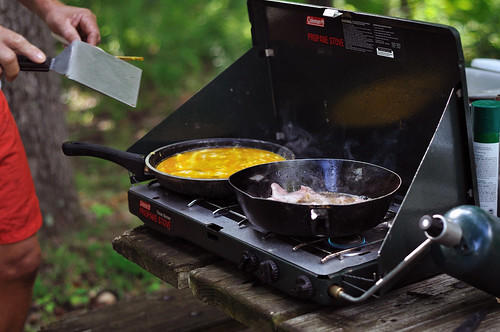
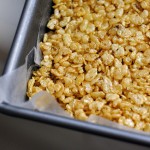

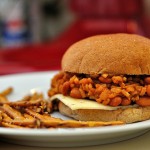

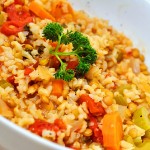

I love that picture of Clive watching Neil’s dad-too cute! Reading this just made me want to plan a trip to Bennett Springs
haha, Clive ate everything he came across. I stopped him before he nom’d the scorpion. I love camping!
Thanks so much for the compliment about my Backpacking Recipes blog. Glad you like it. There will be more interesting recipes to come over the next few months. Happy Camping!
Thanks! I use your site to plan all the time and have learned so much. We leave for Montana this week and I have several of your recipes on the menu!